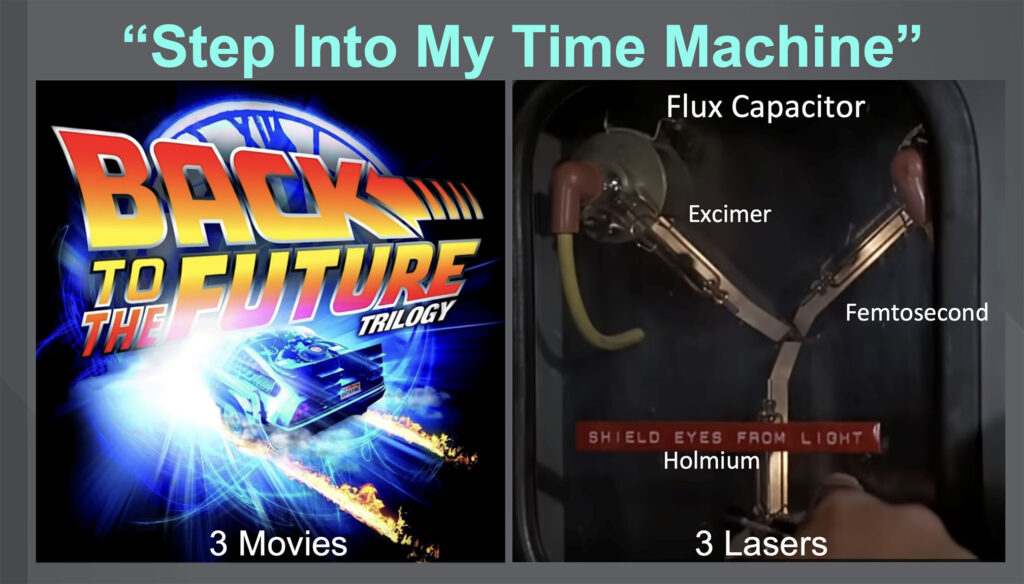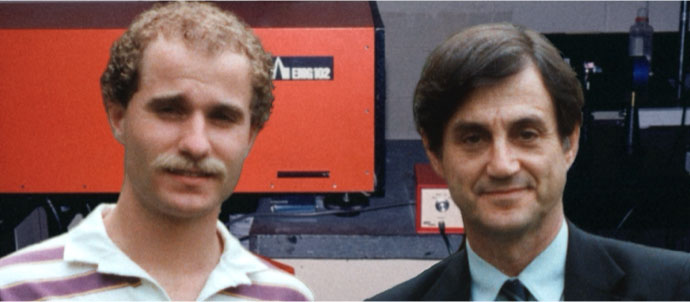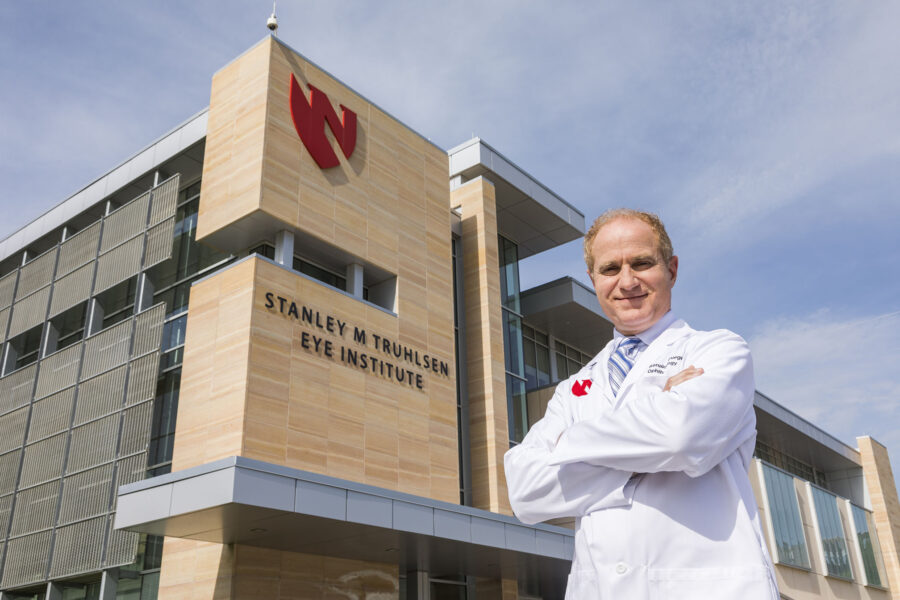Ronald Krueger, MD, director of the Truhlsen Eye Institute, recently took on the role of time traveler.
In April, Dr. Krueger delivered the Roger Steinert, MD, Memorial Lectureship at the American Society for Cataract and Refractive Surgery annual meeting in Los Angeles.

In his lecture, titled “The Laser Vision Correction Journey: Step Into My Time Machine,” Dr. Krueger leaned into the “Back to the Future” movie trilogy to highlight advances in refractive surgery.
Mirroring the trilogy, Dr. Krueger spotlighted three different lasers that, at different times, have had major impacts on refractive surgery.
“I was fortunate to be involved with the beginning and ongoing developments of all three,” he told his audience.
Dr. Krueger, who also is the McGaw Professor and Chairman of the UNMC Department of Ophthalmology and Visual Sciences, led his audience through his personal futuristic trilogy, beginning with:
1984: The Excimer Laser
“I got involved with the excimer laser while still in medical school,” he said. “My ‘Doc Brown’ was Stephen Trokel, MD, who in 1983 patented the use of this technology, which is foundational in modern day LASIK and PRK surgery.”

As Dr. Trokel’s protégé, Dr. Krueger got to experience the “time machine” of clinical and commercial development of the laser, which uses UV light to reshape the cornea with sub-micron precision and without forming a scar to correct a wide range of refractive errors and aberrations that distort vision. Just earlier this year, the U.S. FDA approved the newest category of personalized LASIK using ray tracing technology through a multicenter clinical trial in which Dr. Krueger and UNMC were the coordinating investigator and center.
1995: Pico/Femtosound Technology
Dr. Krueger started research using picosecond lasers as a corneal cutting tool while a junior faculty member at Saint Louis University in 1995, leading to early clinical trials with this technology.
“This technology was later refined to that of femtosecond lasers used first in creating modern LASIK flaps and later in SMILE lenticular extraction surgery.” Krueger also helped to co-found the femtosecond laser’s commercial use in laser assisted cataract surgery, which is able to simplify and refine the visual outcomes of modern cataract extraction.
2000 and beyond: The Holmium:YAG Laser
The holmium:YAG laser was FDA approved in 2000 as a corrective treatment for hyperopia (far-sightedness), but excessive thermal side effects and regression led to the company declaring bankruptcy three years later.
“A group of us didn’t give up on this technology, however,” Dr. Krueger said. “We now have modified its wavelength and delivery to introduce a new application for restoring accommodation (reading vision), which still is in commercial development.
“It has been a fantastic journey with these three ‘time machines,’ and the journey continues,” Dr. Krueger said. “This same start-up group now has a new non-laser energy source using micro-shock waves that will treat the natural lens for restoring accommodation (reading vision) and retarding cataract formation. This will be the next time machine leading into the future of vision correction surgery.”
And the big “Doc and Marty” scene?
Dr. Krueger was chosen to induct Dr. Trokel into the Ophthalmology Hall of Fame in 2008, almost 25 years after working together on the excimer laser.
Dr. Krueger said it was an honor to be a part of celebrating Dr. Trokel at that event, and it also was an honor to be invited to give the Steinert Lecture.
“I was fortunate to work with Dr. Steinert in this excimer laser journey for three months during 1986 and in 2012 was honored to have him be the primary discussant of my American Ophthalmological Society thesis,” he said. “He was another of my many great mentors and role models.”
The Steinert Lecture was established to honor the late ASCRS president Roger F. Steinert, MD, who, for several years, also served as program chair of the ASCRS Annual Meeting. In addition to honoring Dr. Steinert, the annual lecture is given by an ophthalmologist “who is recognized for their outstanding contributions to refractive surgery,” according to the ASCRS.
Dr. Krueger has served as the associate editor of the Journal of Refractive Surgery, and he is past president of the International Society of Refractive Surgery, 2014-15.

COngrats!
Very impressive that Dr. Krueger was invited to give the Steinert Lecture. He has done an absolutely incredible job of growing the Truhlsen Eye Institute – UNMC/NM is so lucky to have him.